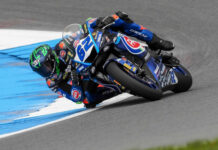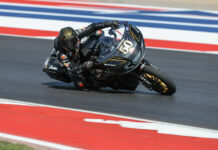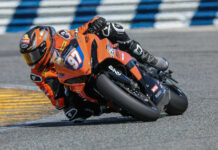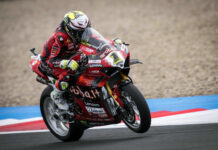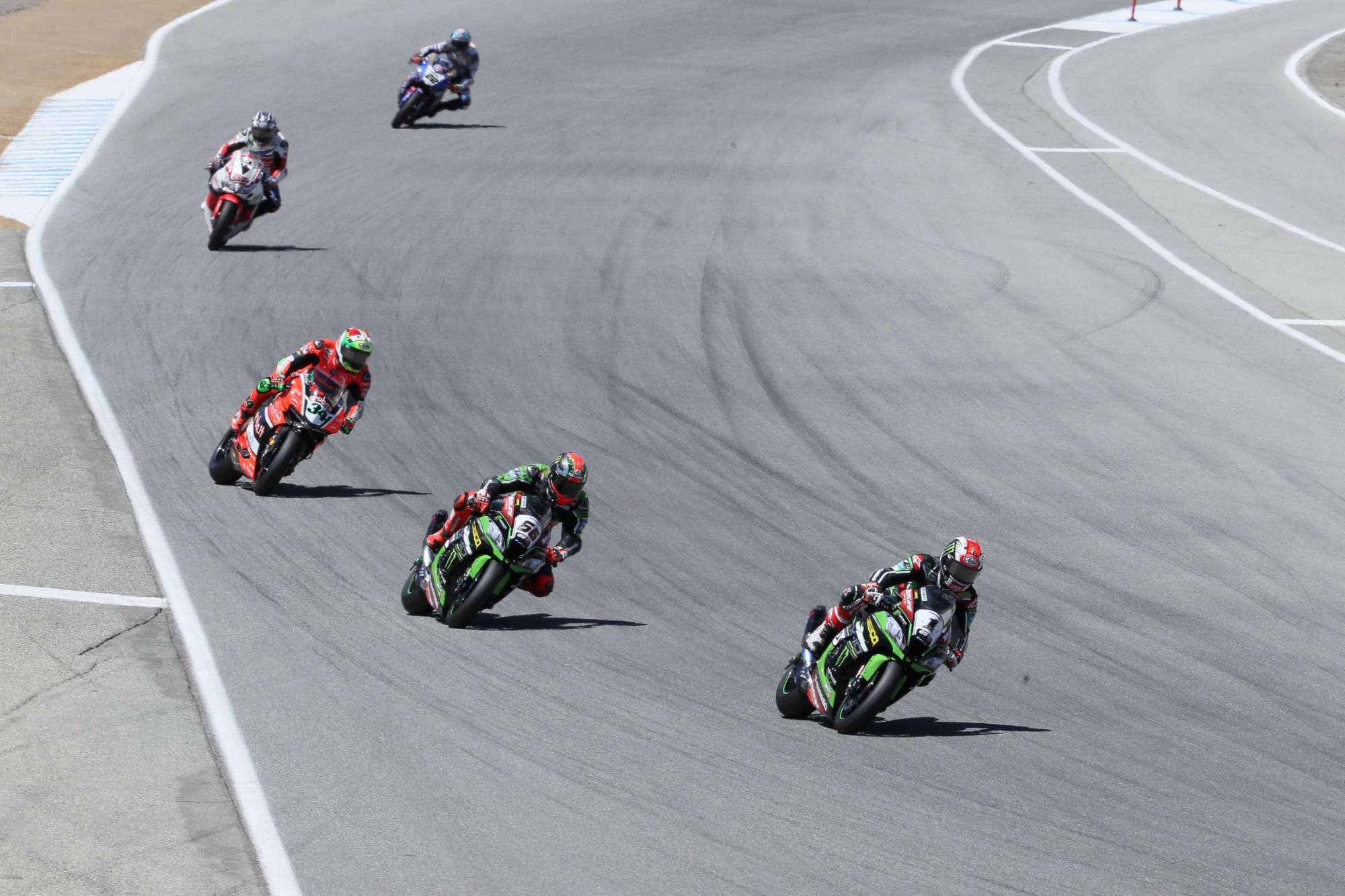The Laguna Seca Corkscrew can be scary but in the Superbike World Championship the Andretti Hairpin affects the brakes more
Brembo X-ray analysis of the application of Ducati and Kawasaki braking systems on the California track
DETROIT, (July 6, 2017) – Marco Melandri’s return to victory having been entered into official records, the Superbike World Championship round eight will be contested at Mazda Raceway Laguna Seca in Monterey, California, July 7-9.
Situated on the Monterey peninsula, 93 miles from San Francisco, the circuit was inaugurated on November 9, 1957 with a race won by a 500 TR Ferrari. The track has changed six times from its inauguration but the latest version has not changed since 1996.
Its distinctive feature is the continuous slope variations in gradient, from the well-known Corkscrew, a rapid left-right turn with a 59 ft. drop in only 449 ft. Basically it is as if the motorcycles are jumping off of a five-story building.
The track’s extreme windiness and the lack of long straights prevents the Superbikes from reaching speeds of up to 167.7 mph, which are instead exceeded on all the other 12 World Championship tracks. This results in a lot of moderate braking, except for the second bend, the only one where the brakes are used for more than four-seconds.
According to Brembo technicians, who work closely with 17 World Superbike riders, Mazda Raceway Laguna Seca is an averagely demanding circuit for the brakes. On a scale from 1 to 5 it has been given a difficulty level of 3, the same as the one of the tracks that will host the next two rounds that is Lausitzring and Portimão.
The demand on the brakes during the GP
Though this is the World Championship’s shortest track (2.2-miles), brakes have to be used 10 times in each lap: the same amount as Aragon which 3.15 miles long. Laguna Seca also has the lowest lap time of the World Championship, with a total braking time of 29 seconds per lap.
Consequently the braking system is in action for 35 percent of the racing time: the record in the racing season. Strangely enough, the record percentage for MotoGPs is held by another American circuit: The Circuit of the Americas, with 38 percent.
Half of the 10 braking distances on the Mazda Raceway Laguna Seca are less than 328 ft. and only one exceeds 656 ft. The average deceleration is the lowest in the World Championship, only 1.01 g, thanks to three turns with 0.8 g rating and just as many with 1 g.
The total force exerted by a rider on the brake lever from the start to the checkered flag exceeds 1 ton – equal to the weight of some sixty coyotes.
The most demanding braking sections
Out of the 10 braking areas of the Laguna Seca Mazda Raceway only one is considered highly demanding on the brakes, six are of medium difficulty and three are light.
The most demanding of all is the Andretti Hairpin (Turn 2) because besides being the fastest point on the circuit it is also on a slight downslope: the Superbikes reach it at 159 mph and brake for 5.1 seconds to slow to 46.6 mph. They manage to do so in just 679 ft. less than the height of each of the Golden Gate Bridge towers.
MotoGP motorbikes can brake in a shorter space thanks to carbon discs, but the Superbikes can only use steel discs with 2 percent carbon. The riders put 12.5 lbs. pressure on the brake lever and are subjected to a 1.3 g deceleration. At that point the pressure of Brembo liquid in the braking system touches 12.2 bar.
The braking section at Turn 5 is also very long: 548 ft. to come down from 144 mph to 65.2 mph. The pressure of the braking liquid is however 9.3 bar, less than 10.5 bar at Turn 7 where the entry speed (141.6 mph) and the end of braking speed (78.2 mph) are greater.
The Corkscrew deserves a special mention, the scene of famous passes of Casey Stoner by Valentino Rossi, and of Rossi by Marc Marquez. The Superbikes enter the corner at 76.4 mph and brake for 200 ft. to reduce their speed to 47.2 mph in 2.3 seconds. The pressure on the brake lever this time is 6.6 lbs.
Brembo performance
Since the Superbikes returned to Mazda Raceway Laguna Seca in 2003, bikes with Brembo brakes have never failed to win: four wins for Kawasaki, two each for Aprilia and Ducati. The rider with most wins is Tom Sykes with three victories. In total Ducati have won 12, but only two riders have won two in a row: Ben Bostrom in 2001 and Chaz Davies in 2015.


